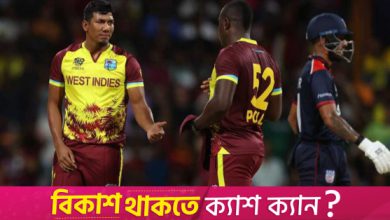‘Jasprit Bumrah is the next best in Asia after Wasim Akram’

Lakshmipathi Balaji knows a thing or two about injuries. About Osteitis Pubis, which affects the abdomen that connects four muscles. About the knee, which is an integral part of everyday life and infinitely more significant when one is a fast bowler. And about the back, for which he underwent surgery, had a screw inserted in his back, lost three years of cricket but never belief and faith, and came roaring back to make an India comeback.
With a smile to die for and a cricket brain less celebrated than it should be, Balaji has now entered a new chapter in his cricketing journey, taking over as head coach of the Tamil Nadu state side after having slotted in as assistant coach last year. He has been bowling coach at various IPL franchises, is an accomplished analyst and has few regrets that injuries blighted a career that promised so much.
Few are in a better position, therefore, to appreciate what Jasprit Bumrah has had to endure over the last year and a bit. Clearly the spearhead of the fast-bowling attack and the world’s premier clear-format pacer, Bumrah contracted a stress reaction in his back and went under the surgeon’s knife in New Zealand in March last year, having played no competitive cricket in the preceding six months.
There was apprehension over the vice-captain’s future. Back injuries can be career-altering, especially for a fast bowler, and Balaji himself reels off names in the modern era to buttress his point – Shane Bond, the wonderful Kiwi quick, Varun Aaron, the Indian paceman who held so much promise, Bala himself. “But Bumrah is different, isn’t he?” he flashes that million-dollar smile. “He hasn’t slowed down, he has gotten quicker, he has gotten better. He is just amazing.”
Balaji took his time returning to competitive play after his surgery in early 2006; it wasn’t until the 2008-09 season, after strenuous and mentally draining work with former India opener and then Tamil Nadu coach WV Raman as his unflagging ally, that he was emboldened enough to make a comeback in the IPL and then in the domestic season that followed. A rich haul, 36 wickets at 17.15 in the Ranji Trophy, facilitated his call-up to the Test team that toured in New Zealand in early 2009, though he didn’t get a look-in with the decision-makers plumping for Munaf Patel.
“I know science has become so much more advanced, technology has improved massively, but to be back playing cricket less than six months after back surgery, with a foreign object in your body, is fantastic,” Balaji, in a freewheeling chat with The Hindustan Times, croons about Bumrah. “I made my way back slowly. There were only so many balls you could bowl in a day. Sometimes, the back would get so stiff that you couldn’t bend, you couldn’t walk. To try to bowl with a stiff back is like trying to fly a commercial aircraft without a pilot. I had to recalibrate my plans, sometimes skip matches because the back wouldn’t allow me to play. But to be playing in the (50-over) World Cup seven months after surgery… I don’t even know what to say.”
Balaji is in awe of Bumrah 2.0, a meaner, more dangerous version than before the surgery. “I mean, guys lose pace, they lose a bit of confidence when they return from any surgery. But this man, he has become even better than before, which is saying quite a bit. One of the more noticeable things about his bowling is that he has added a late away-swinger from the right-hand batter to his repertoire,” Balaji continues. “Earlier, his stock delivery was the one that came back in. But clearly, during the rehab process, he didn’t allow the grass to grow under his feet. He thought about his bowling, he thought about what he needed to do to become even more lethal. Hence this new, late away-swinger.”
What this has done, apart from putting the right-handers on notice, is also make him more effective against the left-handers, Balaji points out. “A lot of teams are left-heavy when it comes to the top order, in various formats. This new delivery brings the bowleds and the leg befores into play against left-handers. Hitherto, they have had to contend with Bumrah taking the ball across them. Now, he is bringing it back to them with little change in action and very late, so they have to be circumspect in so many more ways now.
“He is just the most complete fast bowler right now. Look at him — Test cricket, white-ball cricket, doesn’t matter. New ball, he will get the job done. Old ball, he can reverse it phenomenally. Middle overs in limited-overs games, his variations and his repertoire make him a wicket-taker, not someone who just contains the flow of runs. If there is a more versatile and dangerous fast bowler right now, I don’t know who that is.”
According to Balaji, Bumrah is already a leader in so many ways but he has all the attributes of being a long-term captain. “He has the ability, of course, as a bowler, but he also has excellent temperament, he is so calm under pressure. He is a wonderful student of the game and he is always thinking of the larger picture, not just his own bowling. He is a mentor to the other fast bowlers within the group. He has already led India in more than one format. I see a future skipper in him, I see him being a very good captain.”
Balaji’s eyes go saucer-like as he returns to reverse swing. “Did you see that ball to Ollie Pope?” he gasps, still in total wonderment. “This guy had made 190 in the previous game, to reduce him to such helplessness (in the second Test against England in Visakhapatnam in February), unbelievable. And it isn’t just that one ball. He has so much mastery over the yorker, I can only marvel at his control.”
Bumrah, like many of his Indian contemporaries, doesn’t have a global tournament winner’s medal around his neck. “If he can bowl India to this T20 World Cup title, it will cement his legacy as Asia’s second-best fast bowler, after him,” he points towards Wasim Akram, who is engaged in a serious conversation with his old mate Ravi Shastri which ends in such uproarious laughter that they attract the attention of hundreds around them. “Wasim bhai, the ultimate. They both have identical traits, they have changed the dynamics of fast bowling. Historically, if you see, great fast bowlers use their lower body to gain momentum with their run-up, with their explosive approach to the crease that helps them generate ultimate pace – the Dennis Lillees, the Michael Holdings, the Malcolm Marshalls.
“Asians don’t have lower bodies as strong as the Australians or the West Indians. But both Wasim bhai and Bumrah have used sport to become terrific fast bowlers, not athleticism. Their upper bodies are strong, they have hardly any follow through. They don’t gain anything in the run-up. Everything happens from their hand, their wrist, the bowling arm is dominant and they do everything with the bowling arm alone — the accuracy, the yorkey, the pace and changes of pace, the changes in angle — which is why they are able to take the pitch and the conditions out of the equation. Even on the most docile surface, they bring something extra with the ball because of the work they do with their upper body.”
Warming to the Akram parallel, Balaji gushes. “Bumrah is the next best in our continent only after him. Akram sprang into consciousness with some unplayable balls and three wickets in the 1992 World Cup final. It was after that, until 2003, that he chased and courted greatness. I feel this is the right time for Bumrah to chase greatness over the next decade, particularly if he can single-handedly win India this World Cup.” High praise, considering Bumrah still has several years left in him. High praise, indeed.





